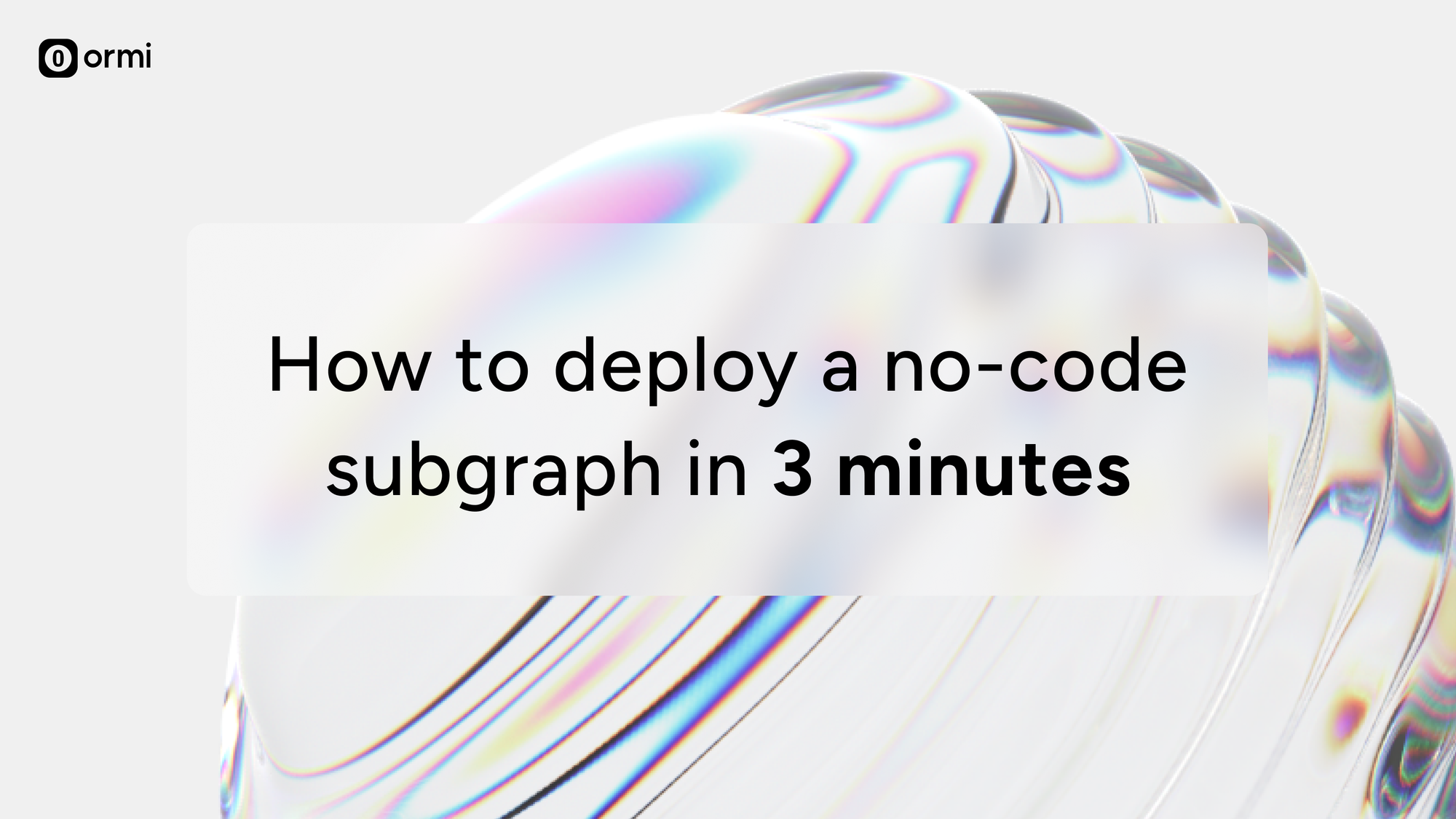How to deploy a no-code Subgraph in 3 minutes: Real-time blockchain indexing with Ormi
Learn how to deploy a no-code subgraph in minutes using Ormi 0xGraph. This guide walks through real-time blockchain indexing - turning smart contract data into structured, queryable insights without running your own infrastructure.

If you’re building with smart contracts, you’ve probably realized that extracting and structuring data to make it easily queried is hard.
RPC calls can return raw information, but querying events across blocks, filtering transactions, or building dashboards from it quickly becomes complex and slow.
That's where blockchain indexing comes in.
A blockchain indexer transforms on-chain data into structured, queryable entities that apps, dashboards, and bots can use in real-time.
With Ormi's 0xGraph, you can now go from contract address to indexed blockchain data in minutes - no code and no CLI setup.
Why indexing smart contract data is crucial
Whether you’re building a DeFi dashboard, wallet, trading bot, or AI agent, your app depends on reliable, real-time Web3 data.
Manually parsing logs or running archive nodes doesn’t scale.
A next-generation blockchain indexer like Ormi:
- Structures on-chain events into queryable entities (ex. swaps, positions, votes).
- Delivers sub-second latency for live queries.
- Keeps data synced across high-throughput networks automatically.
If you’re new to indexing, check out our primer:
👉 What is blockchain indexing: Types, limitations, and tools.
Deploy a no-code subgraph in minutes
Here’s how to deploy a smart contract indexer using Ormi’s 0xGraph - no setup, no CLI required.
All you need is the smart contract address.
Step 1: Open the Ormi App

From your dashboard, select 0xGraph and expand the Migrate from Contract Address section.
Note: If you already deployed subgraphs before, click Deploy Subgraph.
Step 2: Enter your contract details
For this tutorial, we’ll use VaultBridge’s Bridged USDC on Katana mainnet.
| Field | Details |
|---|---|
| Contract address | 0x203A662b0BD271A6ed5a60EdFbd04bFce608FD36 |
| Network | Katana |
| Name | katana-vbusdc |
| Version | v1 |
Ormi will automatically fetch the ABI if it’s available. If ABI auto-fetch fails, you can manually upload it.
For vbUSD, you will need to fetch the implementation contracts’ ABI because it uses a proxy contract, so head over to Katanascan and search for the vbUSD contract.
How to fetch an implementation contract's ABI
Go to the block explorer (e.g., Katanascan).
Search for your contract and click the Contract tab.

Click Read or Write as Proxy tab

Copy the implementation contract address: 0x5e875267f65537768435C3C6C81cd313a570B422

Open the implementation contract, scroll to the bottom, and copy the Contract ABI.

Paste it back into Ormi and click Submit.

Once submitted, Ormi begins indexing automatically.
What to read next
- Learn How Web3 Apps Query Smart Contract Data in Real Time
- Explore How to Choose the Best Web3 Data Indexer: Subgraphs, APIs, and Real-Time Blockchain Data
- Or, deploy another example: Build a USDC Subgraph with Ormi 0xGraph and The Graph CLI
About Ormi
Ormi is the next-generation data layer for Web3, purpose-built for real-time, high-throughput applications like DeFi, gaming, wallets, and on-chain infrastructure. Its hybrid architecture ensures sub-30ms latency and up to 4,000 RPS for live subgraph indexing, sub-10ms responses across 100+ API schemas, and a powerful SQL engine for historical and AI-ready data.
With 99.9% uptime and deployments across ecosystems representing $50B+ in TVL and $100B+ in annual transaction volume, Ormi is trusted to power the most demanding production environments without throttling or delay.






